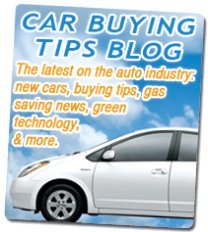Car Buying Advice: Easy Tips on How to Make Your Car More Fuel Efficient & Save Money! Part 2
In the previous post, we talked about how having a well-tuned engine will give you better fuel economy.
But making sure that the engine is in proper working condition is only the start. Here is the next tip on how you can cut down on fuel expenses.
Tip 2: Always Check the Tire Pressure
Admit it: when was the last time that you checked the tire pressure on your car?
If you have no idea on how much air pressure is recommended by the manufacturer, open the driver side door and take a look at the sticker found on the door jamb. You can also check the owner’s manual for the exact figure.
The U.S. Department of Energy can never be wrong. They said that maintaining the right tire pressure will help give you 3% better mileage. Furthermore, losing as little as 1 psi on all four tires will lower your gas mileage by 0.3%.
Also, using worn or bald tires will not only affect fuel economy of your car, but this is also dangerous. The car has a tendency to lose traction, especially on icy or wet roads. Driving with worn tires is dangerous.
Improper tire pressure will also reduce the useful life of your tires. This can also dent or crack your precious wheels if you run over a pothole.
How to Check the Tire Pressure
You can go a tire shop and let the professionals do their thing, or you can invest in a cheap tire pressure gauge to instantly determine the air pressure on your tires.
The air pressure can be measured in Kilopascals (kPa) or pounds per square inch (psi.) Different cars will require different air pressures. The air pressure will also depend on the size and width of the wheels and tires installed. It is good practice to maintain an average tire pressure of 30 psi or 206 kPa. Check your owner’s manual to be sure.
Remove the tire cap from the tire valve and insert the air pressure gauge. You will instantly get a tire pressure reading.
Do this on all 4 tires. If a tire is under the specified pressure, then simply add air.
Remember that too much pressure is also bad for your car. This can lead to early deterioration of suspension parts, and will also produce a hard and stiff ride.
More fuel saving tips in the next post.
Looking for a new or used car? Allow us to help. Request a free price quote and find the latest prices for both new and used cars, enabling you to save time and money in your car shopping.

